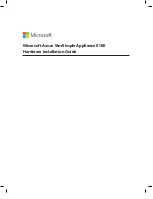
– 42 –
– 43 –
Maintaining Your Drive
& Safeguarding Your Data
A hard drive is a very sophisticated and sensitive device that
requires proper care and maintenance to ensure the longest
possible life, reliable operation, and most of all, the integrity
of your stored data.
Backup Your Data
The single most important action you can take to safeguard
your valuable data is to backup the data to another storage
device. There are many reasons why data stored on a hard
drive can become corrupted or lost. One of the most com-
mon causes of data loss is human error, such as mistakenly
erasing or overwriting a file.
You should backup your data on a regular basis using a
quality data backup utility. How often depends on how
frequently you save or transfer data to the Drive. If you save
and transfer data to the Drive on a daily basis, then you
should backup your data daily.
Defragmenting and Optimizing
a Hard Drive
A hard drive stores data on disks called platters. Each platter
surface is divided into concentric
tracks
. Each track is divid-
ed into sections called
sectors
. A group of sectors, called a
cluster
, is the smallest unit of data storage space on a platter.
When data is saved to a new drive, it is written contiguously,
one cluster after another. As old files are erased, clusters
that were previously occupied become available for new
data. However, there may not be enough space for the drive
Stacking Drives
Even with the large storage capacities offered by AcomData
External Hard Drives, as your storage needs grow, one Drive
may not be enough. We designed our E5 Drives to be stack-
able so that you can add more hi-performance data storage
without taking up any more desktop space.
For this section we assume that you already have an E5
Drive installed on your system, and that the Drive is placed
in the horizontal position.
1. Follow the steps in the section “Horizontal Placement” to
properly prepare a Drive for stacking.
2. Place one Drive onto the other, making sure the feet of
the second drive are properly seated in the foot indenta-
tions of the first drive.
3. Follow the instructions in the section “Connecting the
Drive to Your Computer.”











































